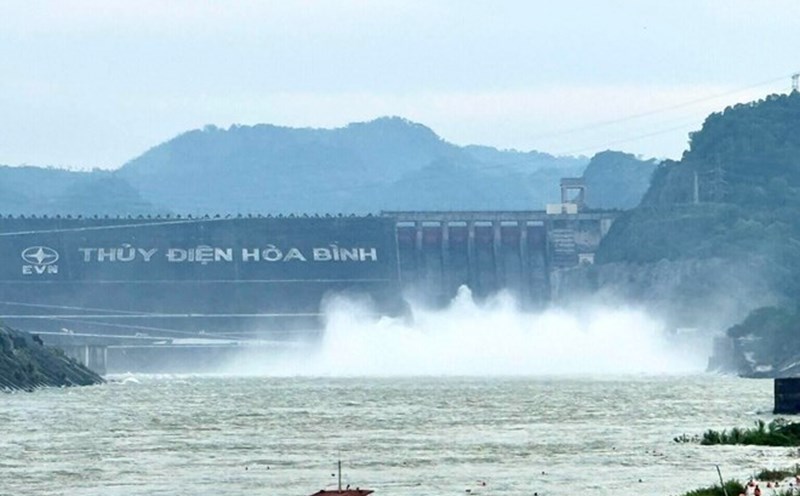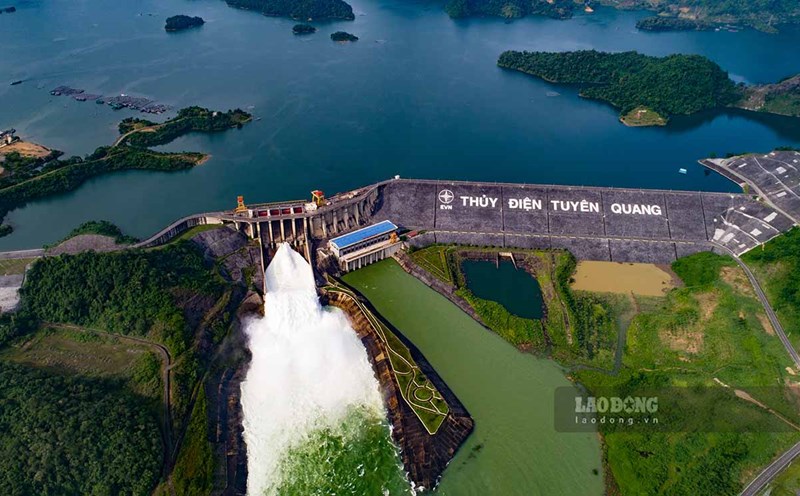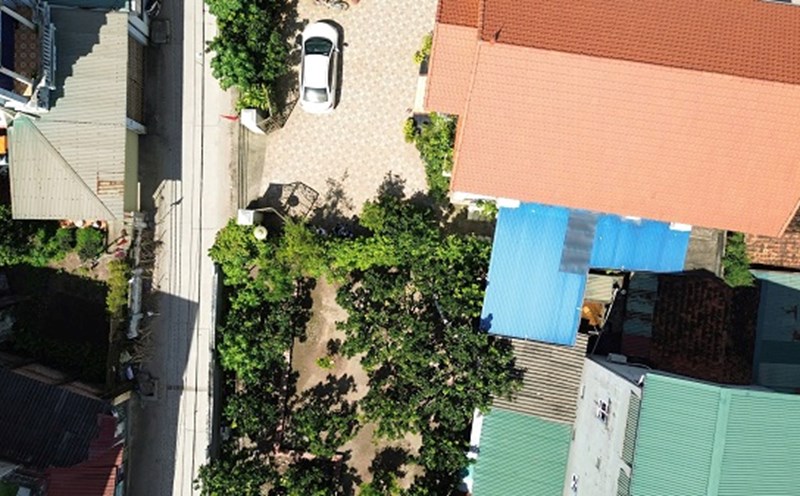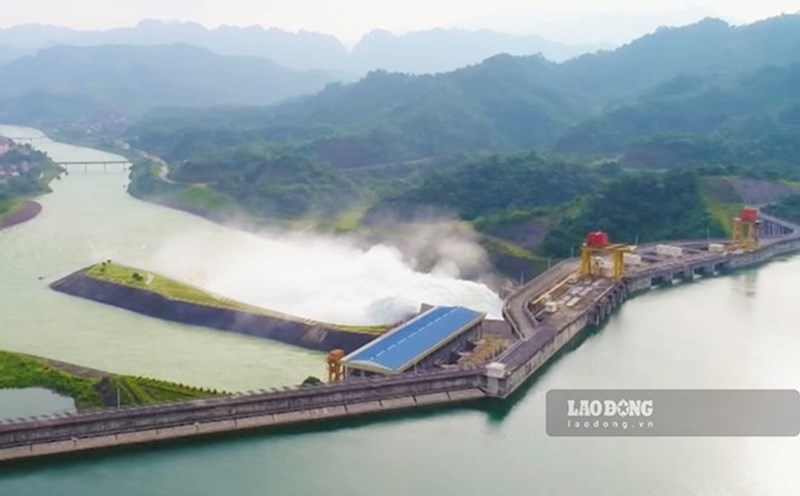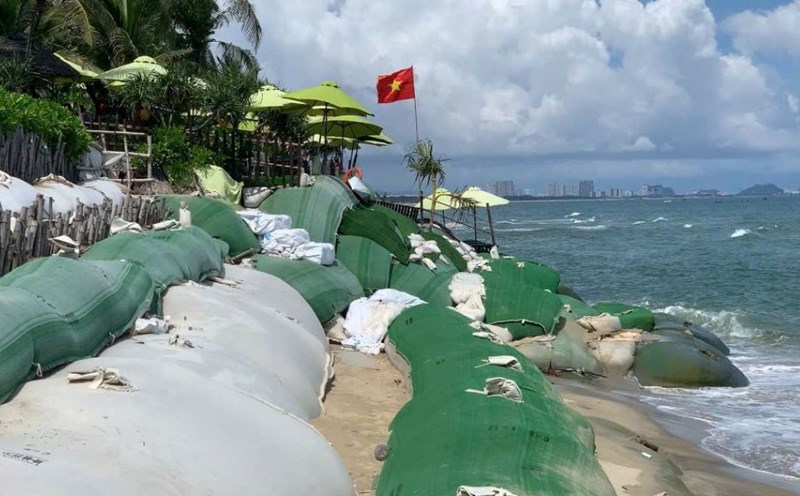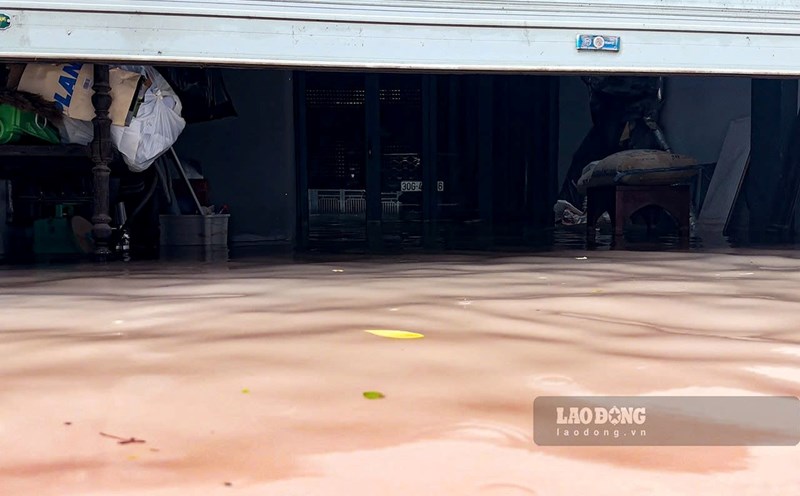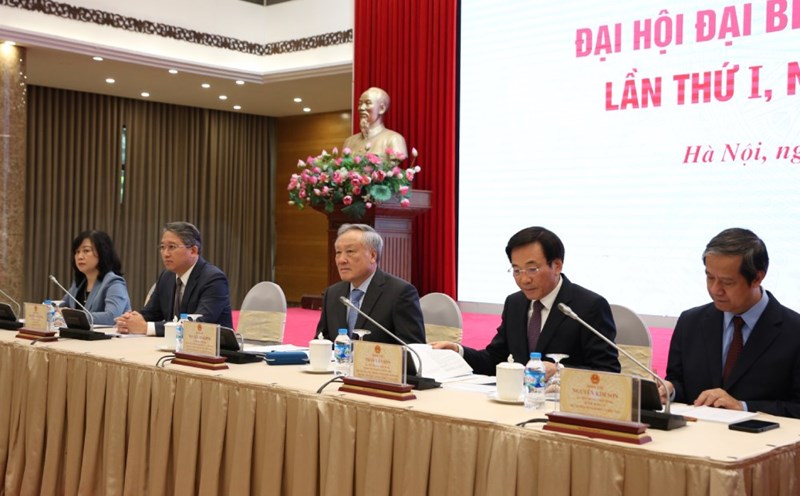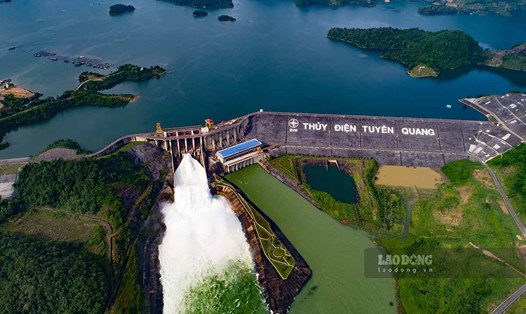Every time they heard about heavy rain, Mr. Truong Van Thanh's family in Hong Minh village, Tung Ba commune hurriedly moved their belongings and left the hut to look after the goods.
His entire thousand square meters of cultivated land are located right under the dam area of the Ban Kieng hydropower project.
"Only if it rains for a long time will rocks and soil fall down from above. Now everyone is worried every time I hear the rain at night, I don't dare to stay overnight," said Mr. Thanh.
The Ban Kieng hydropower project is located at an altitude of about 300 m, with dams, reservoirs and a water supply system to the plant.
This area is only about 400m from the people's cultivated land, while the residential areas of Hong Minh and Ban Kieng villages are more than 1km down.
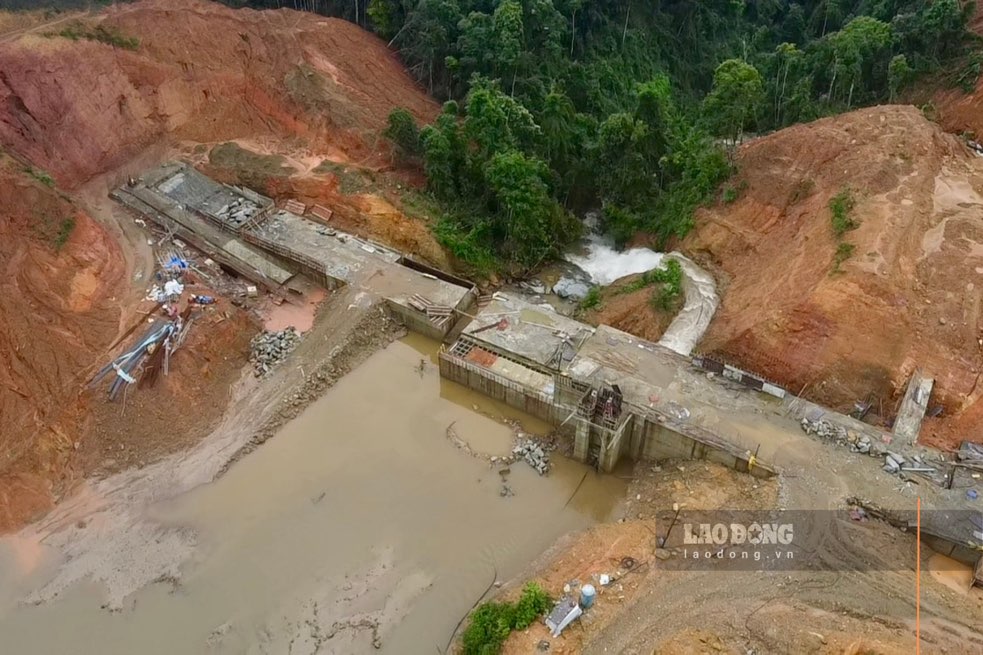
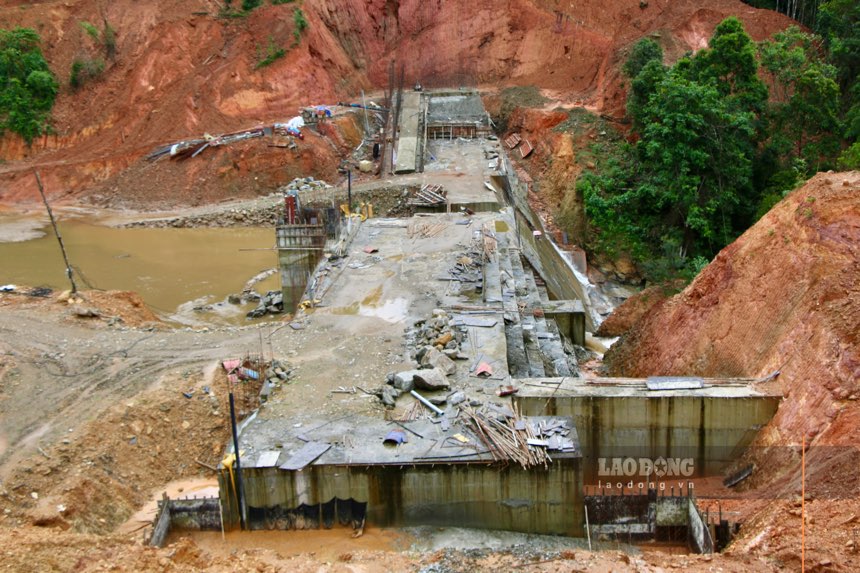
After nearly two decades of implementation, the project is still unfinished, materials are lying around, machinery is still quiet on the top of the mountain, there are no signs of construction workers.
According to the people, since the project was restarted in 2024, rocks and soil from the construction area have often slid down to the garden fields below.
Every time it rains, rocks and soil from the mountain slide down, burying and rushing each block of crops, damaging trees and fields.
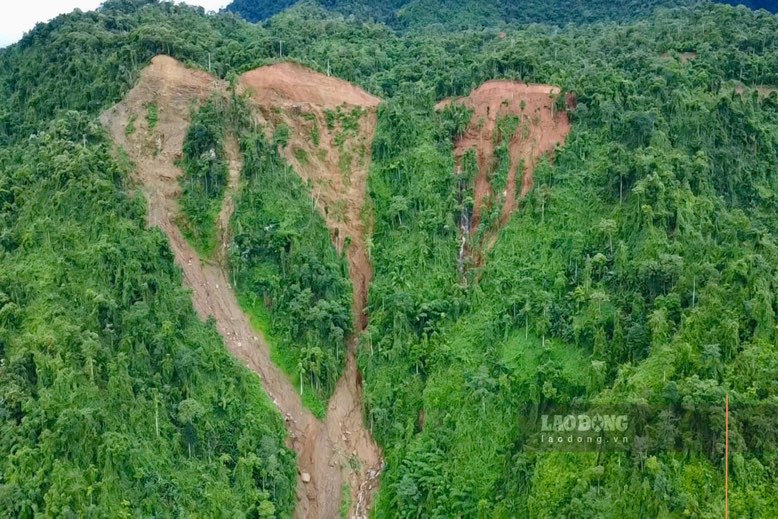
Ms. Nguyen Thi Binh (character's name changed), Ban Kieng village, has cultivated land at the foot of the tank and said: "When it rains for a long time, the fields are full of gravel, trees fall, and the land falls. People have always thought about it, we live here, the worries have never subsided.
According to the reporter of Lao Dong Newspaper in early October 2025, a series of new landslides appeared in the downstream area of the project.
Many plots of land are at risk of landslides every day, with bare trees, buried rice fields, streams changing direction, and muddy water.
The excess land after the tank digging was dumped all over the mountain slope without embankment.
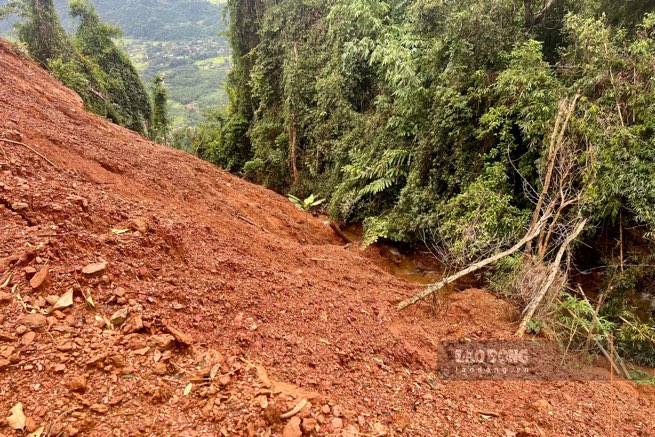
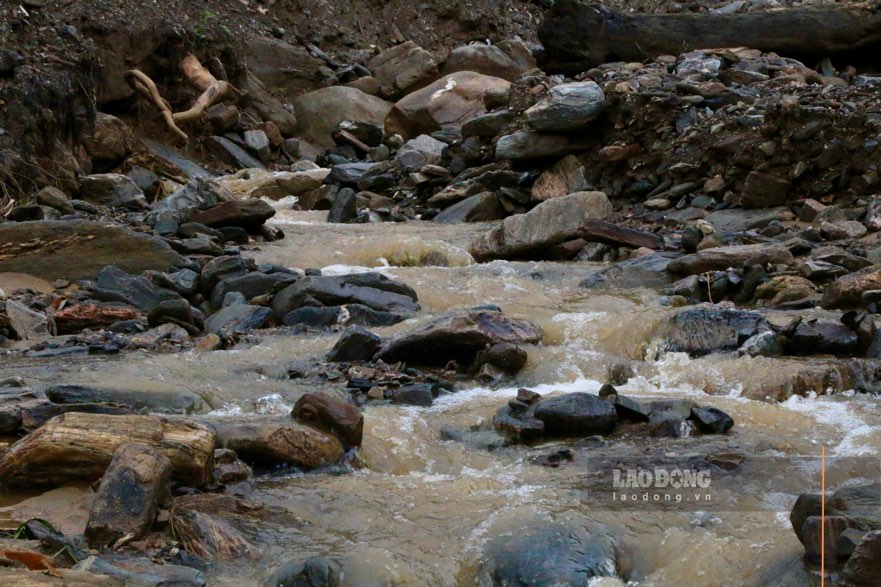
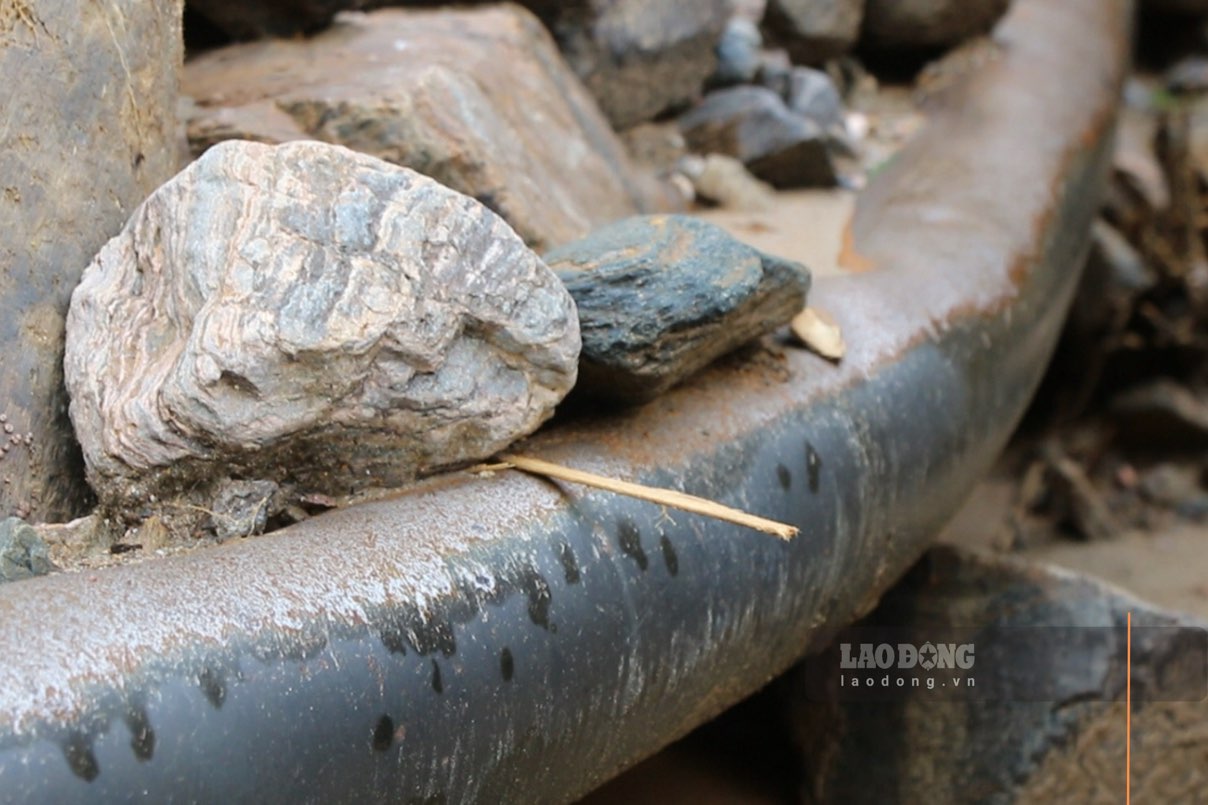
Due to heavy rain, this amount of soil floated massively, filling canals and ditches, causing damage to many crops, many households were devastated when witnessing the impact of cropland.
According to local people, in the past, the stream of Tat Kieng flowed gently, but now the water has changed course and is muddy.
"Ru is affected, trees die, life is turned upside down. Before, I was just worried about losing the crop, now I am afraid that rocks and soil will fall on my house. No one dares to sleep when hearing the news of rain," said a local resident.
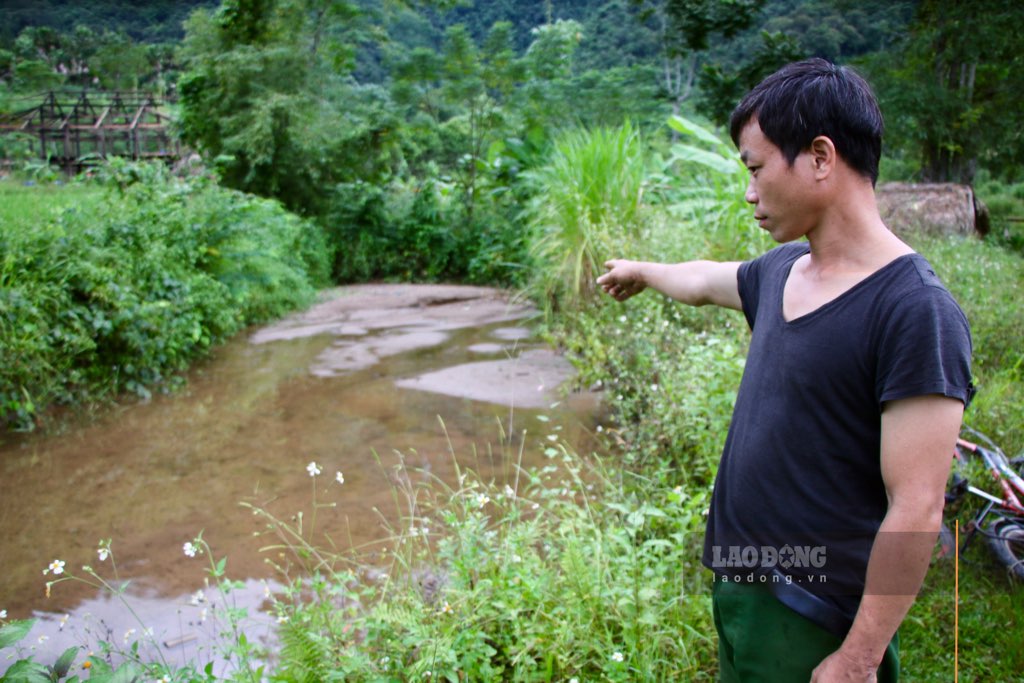
The road leading to the construction site was floating with mud. Looking up from below, the mountain slope is covered with red, long lines.
According to the people, the prolonged construction also causes the forest ecosystem to break down, natural flows to change, irrigation water sources, and farming to affect.
"In the past, the trees were good, the streams were clear, now the land has fallen, the water is cloudy, the fields are gone. Life doesn't know how to get by," a local added.
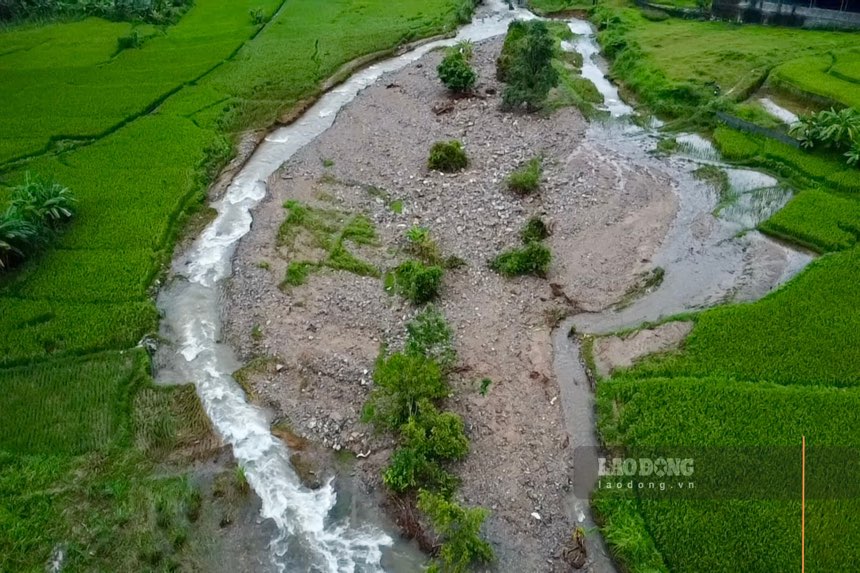
People around the foot of the mountain are worried, because if the dam area is eroded or broken, a huge rock and soil mass above can collapse, burying all the rice fields and villages below.
For nearly 20 years, the Ban Kieng hydropower project has not been completed, while people living at the foot of the mountain live in fear and anxiety of landslides haunting the entire village.
In the inspection records of Tung Ba Commune People's Committee from March to July 2025, it was noted that the construction of Ban Kieng hydropower plant caused landslides and overflowing into the fields, affecting many households in Hong Minh and Ban Kieng villages.
In the area of Tat Kieng stream, the construction unit dumped waste in the wrong location, rocks and soil flowed down with heavy rain, causing silting up the flow, many areas of rice fields along the stream were affected.
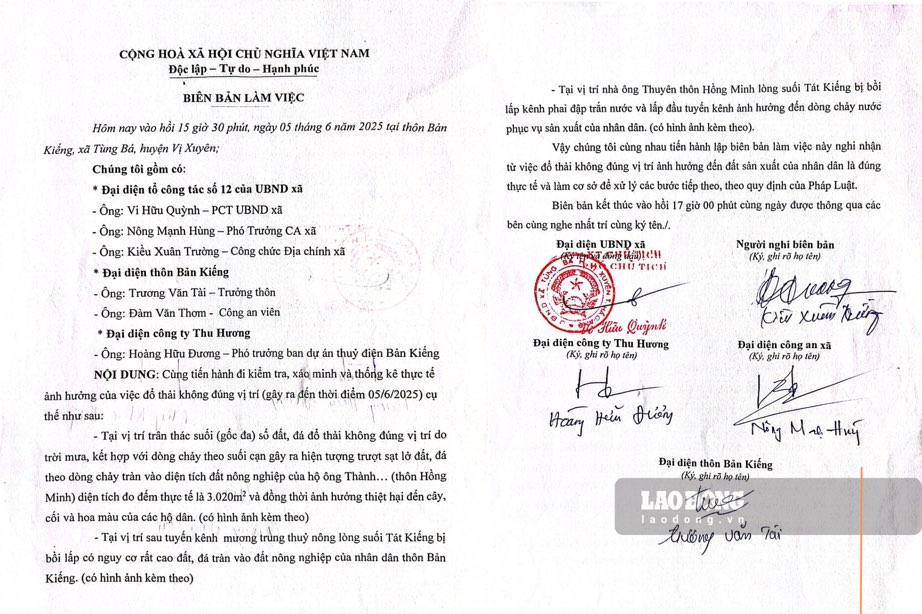
By mid-July, heavy rain continued to cause landslides, rocks and soil from the upstream area flowed down, damaging more than 20,000m2 of rice fields, along with many sections of canals and fish ponds of local households.
Talking with Lao Dong Newspaper reporters, a representative of Tung Ba Commune People's Committee confirmed that the people's reflections were well-founded. Soil and rocks arising during the construction process have not been transported to the gathering point.
According to local leaders, the unit temporarily constructed soil and rock in the dam area and the approach road, causing heavy rain to cause the soil and rock to slide, flowing down streams, natural forests, regenerative forests and people's fields.
At the time of discovery, the commune had requested a temporary suspension of construction since April, coordinating with Vi Xuyen district, Ha Giang province (old, before the merger) to make a record and handle violations.
According to the People's Committee of Tung Ba commune, the landslide area has not been completely repaired. The construction unit plans to arrange stone baskets in floors to keep the soil, limiting the risk of further landslides.
If the dam incident occurs, nearly 100 households living downstream will be directly affected. Therefore, it is necessary to soon take measures to ensure safety, avoiding the risk of damage to people and property.
Currently, the locality continues to count the damage, request compensation and request to ensure the safety of the dam and reservoir.
The Ban Kieng hydropower project is invested by Ton Tho Agricultural Lam Construction Investment Joint Stock Company, with an installed capacity of 3.6MW, started construction around 2005, expected to generate electricity in the first quarter of 2009.
In 2024, the project will be restarted, with a completion date for the third quarter of this year. However, there have been almost no construction activities at the construction site for many months.
Ms. Le Thi Ngoc - Chairwoman of the Board of Directors of Ton Tho Agricultural Lam Company - explained that due to the heavy rain in the past, the project had to temporarily stop until the weather was better.
Ms. Ngoc admitted that there were landslides that affected people's lives after heavy rains, and provided documents showing that the company had taken many compensation and support actions.
"We sincerely hope that the people and local authorities will support us. Only then can the project be completed and put into operation and use soon," said Ms. Ngoc.

